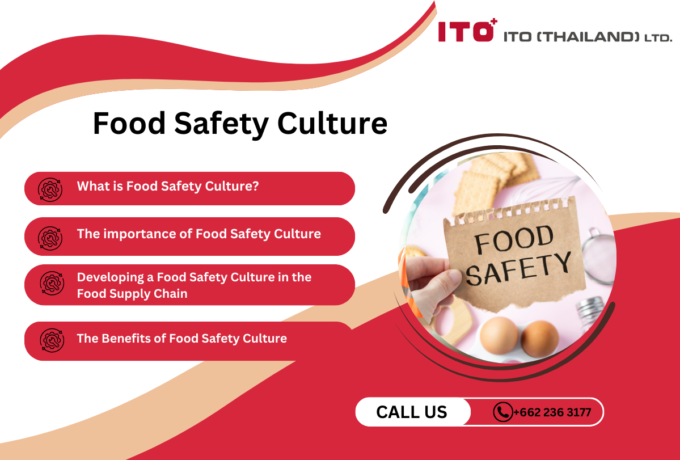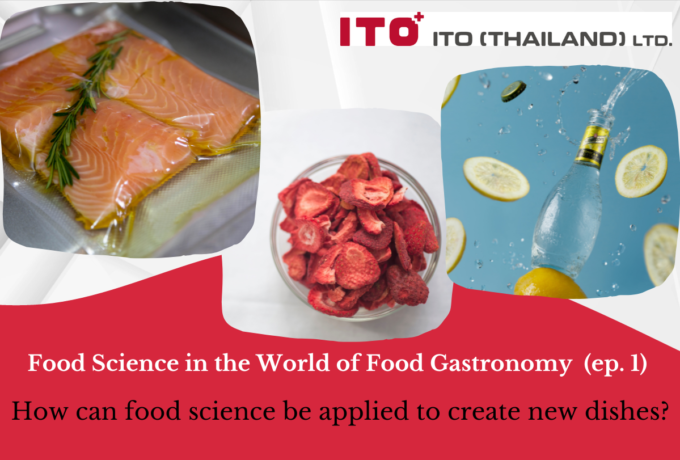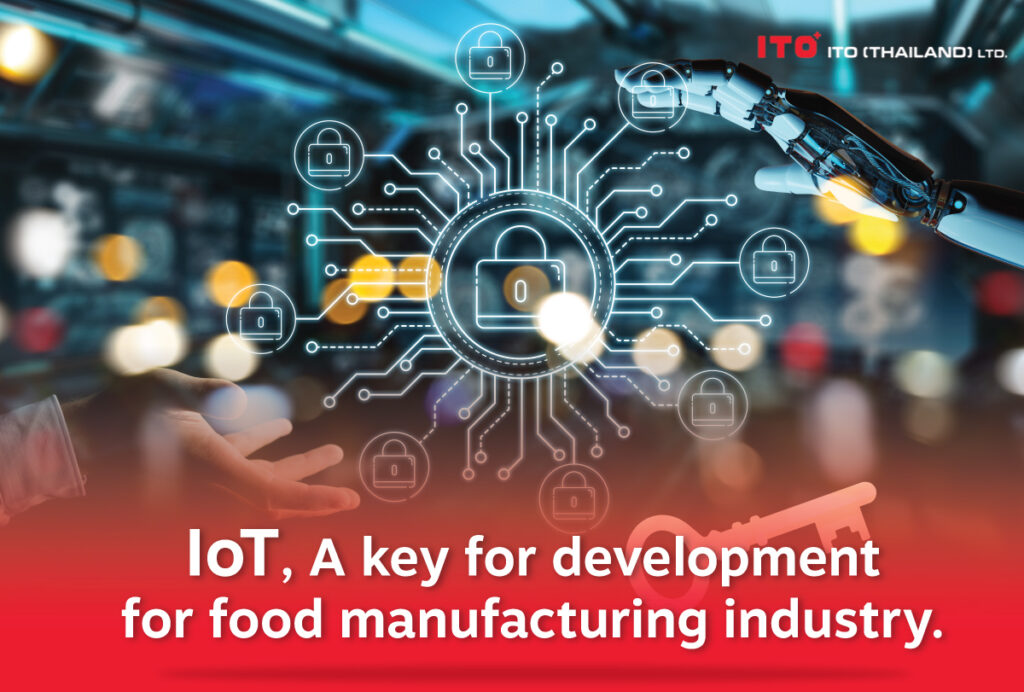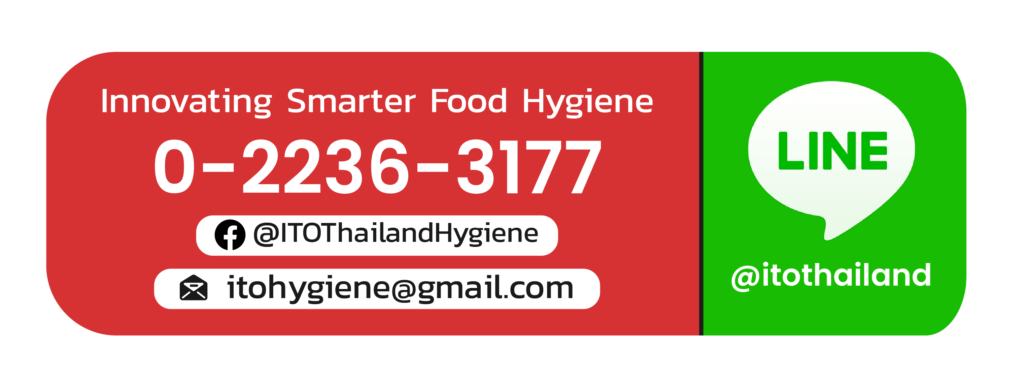ITO Thailand Hygiene Blog
IoT (Internet of Things) and Food Industry
The relevant and popular IoT systems used for food industry include data acquisition system, data communication system, data analysis system and data usage [1].
Data acquisition system
Data acquisition system is usually comprised of the sensors that can sense the environment such as location, temperature, humidity, airborne dust, chemicals, gas, time, pH, impact, numeration, measurement, receiving still and motion pictures, etc. These sensors shall collect real-time data of specified intervals resulting us to know the real time data which will be transmitted thru online system in order to save and analyze by transmitting thru data communication system.
Data communication system
The popular used data communication systems are the Internet/Ethernet systems, radio frequency identification (RFID) system and wireless sensor network (WSN) system that can be self-connected requiring low energy and little supervision of human being such as Bluetooth, Wi-Fi, ZigBee, Near Field Communication (NFC) [2]. The data will be sent online to data storage service system called a “Cloud Computing”, also known in short as “Cloud”, available for both free of charge and with charges, which can be accessible to data on Cloud from anywhere [3] including transmitting commands back to the source thru cloud system.
Data analysis system and data usage
For data analysis and data usage, real-time raw data is used for simple monitoring food products such as temperature fluctuations, impact, quantity, label printing errors, product grouping by bar codes, etc. by setting an alarm when data-level error occurs or saving data as a database for systematic traceability.
Raw data will be used for analysis and planning for the purpose of improving the efficiency of the process and reducing the defects, such as planning the transportation of goods based on traffic information and routes, planting or production planning according to customer requirements, quality and safety predictions based on internal (e.g. recipes) and external (e.g. temperature, time, humidity) factors, enabling to monitoring the qualities (e.g. color, texture, flavor, vitamins, etc.) and safety (e.g. food sterilization, microbial toxin production during storage, carcinogens in frying oil, etc.) in real time without destroying the samples for analysis and time saving for sample analysis, etc.
For marketing and sales promotion, the data collected as a database can be used to forecast the customer needs or organize sales promotion programs to distribute more products, such as changing from First in – First out system to Least Shelf-life – First out system by using data to predict the remaining quality from time-temperature history instead of using the conventional expiration date. According to the research, the product quality variability is reported to be reduced resulting to a greater reduction of expiry product [4].
Applying IoT technology to support food standards will be very beneficial based on data acquisition in real time, secured and not lost, as well as, easily accessible and search; for instance, in case of data traceability to prove food fraud or counterfeiting products from other sources, including supporting food defense.
In case the consumers wish to access the information on product allergens, they can easily access on their own through online channels. Besides, the data can be used in critical point analysis, setting critical values and monitoring the critical point in real time. Furthermore, self-management function is programmable by automation system or robot resulting to handle the problems more quickly and reduce bias or deviation by human decision-making, as well as, reduce the workloads of workers allowing the workers to spend time for other organizational developments more efficiently.
In the future it is possible that IoT system will be applied to the entire food production chain from raw material production to waste management of food products by easily controlling the operations thru the application including access to consumer data as well.
These technologies are increasingly playing significant roles in our lives. The entrepreneurs, therefore, should adapt to respond to the rapid change of consumer requirements.
We are pleased to provide the service to promote the food industry in Thailand and be a part of a sustainable food society.
If interested in IoT system of automation and robot projects, please contact here for a consultation.
References:
1.Bouzembrak, Y., Klüche, M., Gavai, A., & Marvin, H. J. (2019). Internet of Things in food safety: Literature review and a bibliometric analysis. Trends in Food Science & Technology, 94, 54-64.
2.Nukala, R., Panduru, K., Shields, A., Riordan, D., Doody, P., & Walsh, J. (2016). Internet of Things: A review from “Farm to Fork.” 2016 27th Irish Signals and Systems Conference (ISSC). doi:10.1109/issc.2016.7528456
3.https://sc2.kku.ac.th/office/sci-it/index.php/29-cloud-computing.html
4.Giannakourou, M. C., & Taoukis, P. S. (2003). Application of a TTI‐based distribution management system for quality optimization of frozen vegetables at the consumer end. Journal of food science, 68(1), 201-209.
Related Post
-

Food Safety Culture
Food safety culture plays a crucial role in safeguarding the company's reputation, ensuring the well-being of its employees, and providing a safe experience for its customers.
-

New food source safety issues
What are safety issues worth knowing for trendy new food sources like plant-based and insect-based proteins?
-

British Retail Consortium (BRC) Standard
Food safety management systems play a vital role in ensuring the production and distribution of safe and high-quality food products to consumers. With the global food supply chain becoming increasingly complex, food businesses must implement effective systems prioritising safety, quality, and compliance with industry standards. A food safety management system encompasses a set of procedures, processes, and controls designed to identify, prevent, and manage potential hazards at every stage of the food production and supply process. This proactive approach not only safeguards consumers' health but also protects the reputation and credibility of food companies in an ever more competitive market.
-

Food Science in the World of Food Gastronomy (Part 1)
How can food science be applied to create new dishes?
-

FSSC 22000
Food manufacturers must ensure food safety standards and processes. FSSC 22000 is an official certification program for Food Safety Management Systems (FSMS) recognised by the Global Food Safety Initiative (GFSI). This certification scheme offers a set of guidelines and procedures to ensure uniformity, openness, and safety across your entire supply chain. It applies to all companies operating within the food and beverage industry, ranging from farmers to retailers. By fulfilling the necessary criteria and obtaining FSSC 22000 certification, it is demonstrated that the required standards for food quality and implementing effective processes to manage and mitigate risks associated with food fraud, foodborne illnesses, expensive recalls, and other external threats are met.
-

Food Safety Aspects of Artificial Sweeteners
Artificial sweeteners, also known as sugar substitutes, non-nutritive sweeteners, or high-intensity sweeteners, are artificially produced compounds utilised in place of sucrose (table sugar) to add sweetness to food and drinks. Due to their significantly higher sweetness than regular sugar, only a fraction of artificial sweeteners (200 to 20,000 times less) is required to achieve an equivalent level of sweetness. Since the caloric contribution of these sweeteners, when used in such small quantities, is insignificant, they are often referred to as non-nutritive (4).










